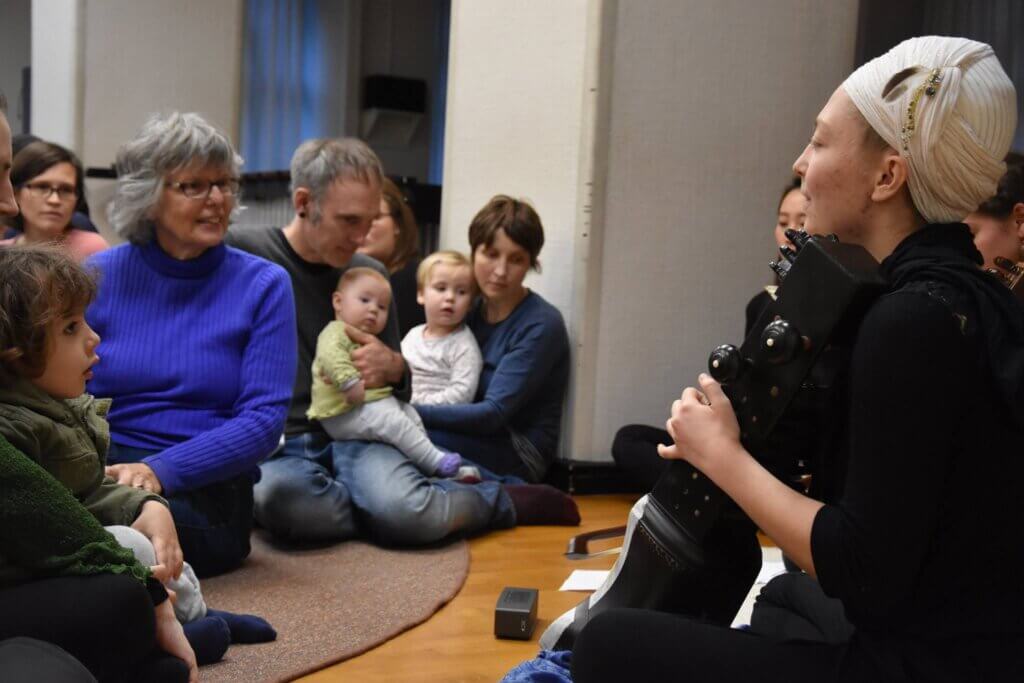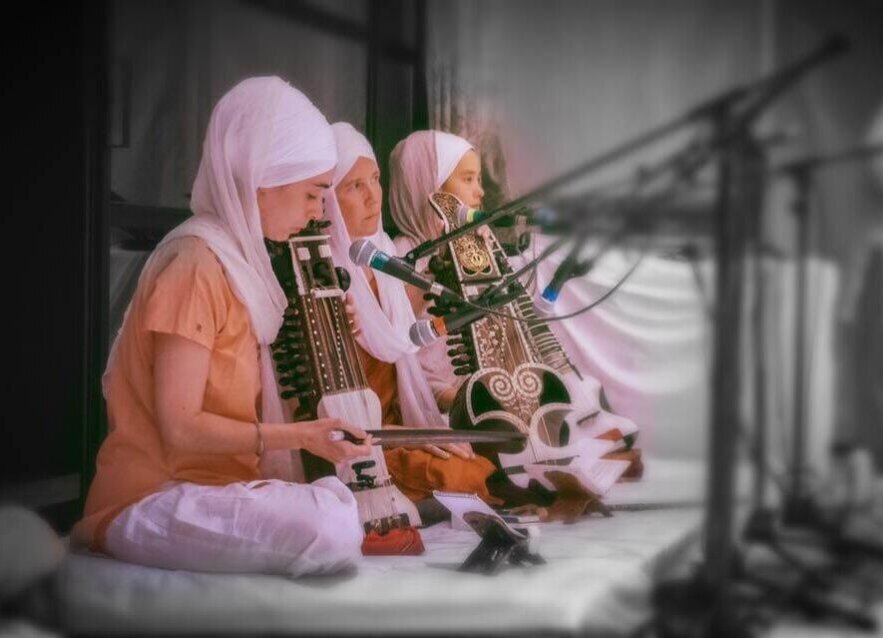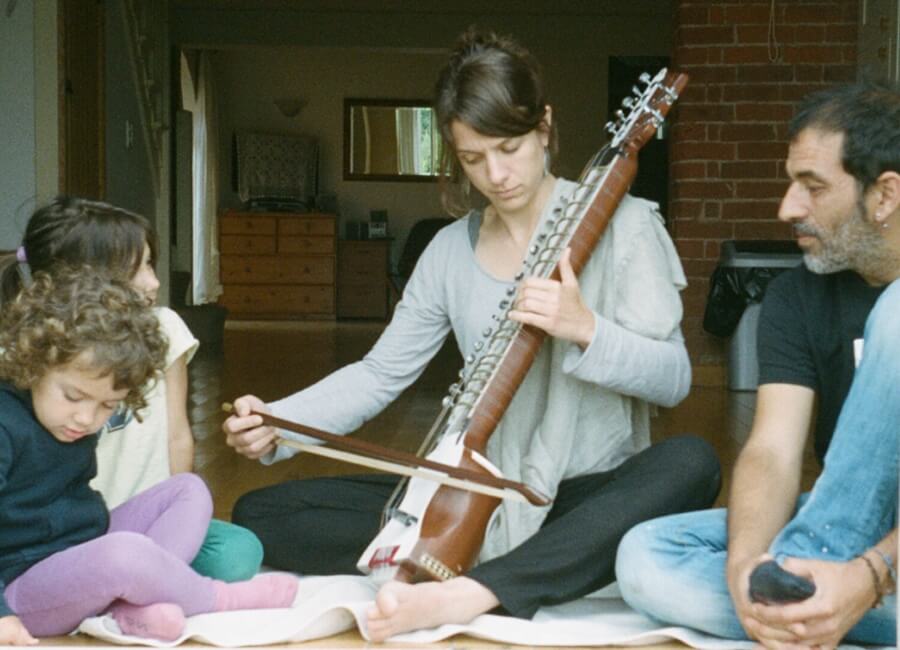By Harjaap Singh
In this modern age of technology, our communication skills have started devolving. The words we use are shrinking in number, and our preferred method of sharing these words is text messaging. This limited method of communication has removed emotion from our conversation and has led to more communication issues in our current generation.
Over the past year I have transformed my previous constructs of emotion and mentality. I had to relearn what it means to feel, the different ways of feeling, and what the feeling itself means. What began as a curious way of understanding myself became a lifelong journey to mastery, a pool in which I have only dipped my toe.
It began last June during a retreat in England. I had come to my teacher with a quest: to find the answer to my fear of death. Everywhere I had looked previously preached blind faith, the idea being to sit back and let life happen to you as an act of God. Instead, I wanted to find a way to live life and somehow attain my own enlightenment, so that I could stay away from the rituals and ideals that have corrupted religion. Of course, in no way am I saying that my enlightenment is in my control; God’s rule is supreme. However, if you think of enlightenment as a job for which you are interviewing, it makes sense to have a resume of your own actions. As I spoke with my teacher, he directed me upon a spiritual path on which I will find my answer. The first step on this path is to understand emotions, to be able to tell how I myself and others are feeling at any moment.
Before I get into the specifics, I must clarify some differences in meaning for certain terminology. During the transition from the Eastern world to the Western, many of these words and definitions were either lost or muddled in the process. In the context of Eastern spirituality, the path of self-mastery is called Siddhi. The path for which I have done Siddhi is called Naad Yoga. This thought process states that everything is sound and vibration: our thoughts, the words we say and even the world we live in. By understanding this concept, we start to experience life as a vibration and as a result, allow ourselves to tune in with the vibration of the universe (Anhad). This tuning in can also be called enlightenment.
In the Western world, everything having to do with this experience falls under the umbrella of feeling. However, feeling is neither the first nor the last level of understanding. The first step is to understand emotion, like learning the alphabet. Emotion is a mental state associated with thoughts, a conscious mental reaction – this is often the first response to an event. The next step would be to make feelings out of these emotions, like making words with the alphabet. Feelings are the result of many emotions internalized; they combine to influence behavior. And finally, feelings combine to create your mood or Raag – the sentence made by combining the words. Mood is the evolved form of emotion and feeling; it becomes your temperament. Your rhythm is the speed at which you feel. These feelings and rhythm combine to create your pitch – the projection of your emotion.
The human spectrum of emotions consists of 22 emotional signatures – indicators that combine to create what you feel. Each of these 22 signatures can be experienced through ten doors: Smell, Sight, Hearing, Taste, Touch, Ego, Attachment, Greed, Anger, and Lust. I was to learn when and how I had experienced each signature through each of the 10 doors. And so, my journey began.
Still having to keep up with school and work, such a big task as this had taken a back seat in my life. It wasn’t until I went to a retreat in Michigan that I really understood my task. There I learned the mood of determination; we call this mood Kalyan in Raag therapy. We connected the emotional signatures to create stories with the mood of Kalyan, and in this way were able to connect to the mood much more deeply. Now the mood of determination held meaning; it wasn’t just a bunch of feelings mixed together.
Kalyan is the mood of determination: when you’re doing something and nothing can distract you. The most important signature in this mood of focus is Krodha: motivation, the push from within. You cannot be determined without the desire to be determined. The second most important signature is Usha, the anticipation of the result: determination is born out of the desire for the outcome. The third most important signature is Tivra: the effect the result has on you, how it courses through your body when you first hear it. The fourth most important signature is Ranjani, your prize. One would never be focused or motivated if there weren’t a prize at the end of the road. And a crucial signature is Ratta: the obsession with the goal or focus (too much of it, and you won’t be focused on action but rather on the concept itself). Determination means to become one with what you are trying to achieve, but only to a point where your action is still louder and happening.
The other signatures that support this overall mood are Marjani and Maddanti. Marjani is what gets under your skin about the goal; it could be the magnitude of the task or even the fact that you need to start – it leads to your motivation. Maddanti is your overwhelming urge to achieve that goal, because your life will be better, or the impact on your life of whatever you’re trying to do is so great that you just can’t wait for it finally to be here. All of this combines to create the mood of determination, Kalyan.
I had experienced the mood of Kalyan through the game of love and relationships. In the game of love, Krodha is what makes you go and ask out that girl you’ve been thinking about so much. Once you ask her, Usha comes up: your anticipation of her answer. Her answer courses through you with Tivra. The reason you even asked her was because you found her beautiful in some way, Ranjani. And lastly your Ratta, your admiration of the girl – but not to the point where you no longer get up and ask her. Your Marjani is before you even got up to ask her; how it got under your skin that you needed to ask her. Lastly, Maddanti is your passion, your urge finally to find that perfect girl in life so that an aspect of your life can be completed.
Obviously, this task of combining the signatures to make a mood is a step later in the process, but it is a hint at how deep this science goes. Anytime I sing Kalyan now, it will only be Kalyan and nothing else because we broke it down to the level of emotional signatures. On the flight home, my friend bought me a notebook and I finally started the project I had been given earlier that year; I took a step back and began working through the emotional signatures in order as a method of completion. I already had a head start because the mood of Kalyan used seven signatures – I was already a third of the way there.
The setup of these signatures in application to the notes in the Eastern scale is that each note has certain signatures that are applied to it. The corresponding sharps and flats are combined in the making of this list. A key point here is that the only way to project these emotions is through sound; emotion precedes everything, and sound carries it out. As you work through these, some will stand out more than others purely based on the experiences you’ve had in the past. Another note: all the signatures can be negative or positive. The examples below will vary because of my own experiences.
Sa
- Tivra – mentioned above
- Kumudwanti – I am a very silly person; I enjoy goofing off. When someone tells me off in a stern voice and it automatically makes me apologize and feel bad for my actions, that is Kumudwanti traveling through the person’s voice.
- Manda – if you have ever been on a vacation and got bored you have felt Manda; when you are tired from relaxing but also too tired to go back to the world of work.
- Chandowati – the result of a transformation. Imagine losing weight: you won’t be able to see a difference in each pound. But if you compare today’s picture with one from a year ago you will see the full circle your efforts have made. The conclusion to your journey is Chandowati.
Re, Komal Re
- Dayawati – when your compassion affects your mood. It is what makes you want to give money or food to the beggar you see on the street.
- Ranjani – mentioned above
- Rattika – when you know a certain line from a song but you don’t know which song it is from. You keep searching for the song and after looking for a while you find it. That relief, the feeling of finding it, is Rattika.
Ga, Komal Ga
- Rodri – if you have a sibling who is bothering you, that restrained feeling of holding in the frustration or anger is Rodri.
- Krodha – mentioned above. It is good to know that Krodha can be seen as the release of Rodri.
Ma, Ma Tivr
- Vajarika – I had a lot of difficulty with this one. It is when you speak to someone directly in an almost abusive fashion. Being a generally nice person, I did not really find myself being outwardly strict with others. Imagine riding bumper carts – how you bump into people and hit them with every intention to “hurt” them; of course in this scenario no one can get hurt but the intention is there.
- Parsarni – something crazy happens during your day and you just have to share it with everyone. For me, I think a lot so if I learn something very interesting just from thinking I feel a desire to share it with as many people as will listen.
- Priti – your unconditional love for someone or something. If you have a pet, and you love it to the point where it can do no wrong, that love is Priti.
- Marjani – mentioned above
Pa
- Kashitti – when everyone is speeding but only you get pulled over, that “Why me?” feeling is called Kashitti.
- Ratta – mentioned above
- Sandeepani – when you sacrifice something of yourself to help another. If a baby falls asleep and you don’t move your hand because you don’t want to wake the baby, it is an act of Sandeepani.
- Alaapni – imagine describing your role model: he/she is so this and so that, the list keeps going on and on. This never-ending elaboration out of love and adoration is Alaapni.
Dha, Komal Dha
- Maddanti – mentioned above
- Rohni – if you’re ever watching a baby and the baby is going into harm’s way, that jump to go and catch/protect the baby is Rohni.
- Ramya – waking up on the weekend without an alarm, that moment of peace where you can just lie there in solitude is Ramya.
Ni, Komal Ni
- Usha – mentioned above
- Kshobani – a panic attack, a sudden jolt even. I once had a dream that I had slept through an exam and then woke up without having missed anything. The explosion of that moment into something much greater is Kshobani.
These are the 22 basic signatures. Specific combinations of these signatures will create certain moods, and the context for the signatures will change, as seen with Kalyan. Once you are able to differentiate these you will become conscious of what emotion you are currently experiencing. Often if it is more than one, they will combine to form a Raag through which you can release the emotion. Once you know the mood you’re in, you regain control over your life. What you will do with it from there is in your control (physical, mental and spiritual).







